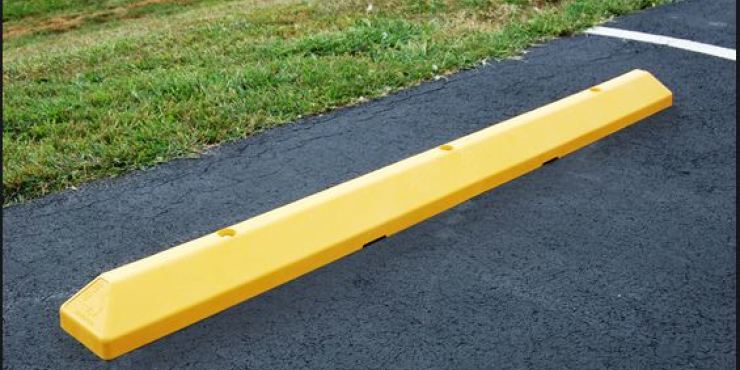Parking Blocks: Essential Guide to Types, Benefits, and Installation
Parking blocks, also known as wheel stops or parking stops, are essential safety tools used in parking lots, garages, and driveways to prevent vehicles from rolling too far. These simple structures protect vehicles, property, and pedestrians by keeping cars in designated spaces. Made from materials like rubber, concrete, and recycled plastic, parking blocks serve as a boundary marker that improves parking organization and safety.
This comprehensive guide covers everything you need to know about parking blocks, including their purpose, benefits, types, key features, installation methods, and maintenance tips.
What Are Parking Blocks?
Parking blocks are low-profile barriers that stop vehicles from moving beyond a certain point in a parking space. Typically placed at the front or back of a parking spot, they keep vehicles from hitting curbs, sidewalks, walls, or other cars. Available in various sizes, materials, and colors, parking blocks suit various environments, from public parking lots to residential driveways.
Benefits of Parking Blocks
- Enhanced Safety
Parking blocks provide a secure boundary, ensuring that vehicles stop safely within a designated space. This reduces the risk of accidental collisions with pedestrians, other vehicles, and property. - Improved Parking Organization
Parking blocks help drivers align their vehicles consistently within parking spaces, reducing encroachment into adjacent spots. They make parking lots more organized and orderly, which enhances the overall experience for drivers and pedestrians. - Damage Prevention
By stopping vehicles before they can hit curbs, fences, or walls, parking blocks prevent costly property damage and wear. They also prevent cars from going too far into sidewalks or other pedestrian areas, ensuring both property and pedestrian safety. - Cost-Effective
Parking blocks are an affordable solution to maintain order and safety in parking lots. Compared to installing barriers or curbs, they are quick and easy to install and often require minimal maintenance. - Environmental Considerations
Many parking blocks are made from recycled materials, offering an eco-friendly solution. Recycled rubber and plastic options contribute to sustainability by reusing materials and reducing waste.
Types of Parking Blocks
- Concrete Parking Blocks
Concrete is a traditional material used in parking blocks due to its durability and weight. Concrete blocks are effective in high-traffic areas and can withstand heavy impacts. However, they can crack and chip over time due to weather exposure, especially in freezing conditions. - Rubber Parking Blocks
Made from recycled rubber, rubber parking blocks are durable, flexible, and resistant to weathering. They absorb minor impacts better than concrete, which protects vehicles from damage. Rubber blocks are also lightweight, making them easier to install and move if necessary. - Plastic Parking Blocks
Plastic parking blocks, often made from recycled plastic, are lightweight, durable, and resistant to weather and UV exposure. These blocks are easy to install and are available in various colors, enhancing visibility. They are suitable for light-duty applications, such as residential driveways and smaller parking lots. - Asphalt Parking Blocks
Asphalt parking blocks are less common but can be found in certain areas where asphalt is already used extensively. These are more integrated with the ground and tend to be weather-resistant. However, they may not be as durable or visible as other types. - Metal Parking Blocks
Metal parking blocks are rare and usually customized for specific industrial applications where heavy-duty protection is needed. Made from durable metals like steel, they are sturdy and built to withstand heavy impacts but may be prone to corrosion in outdoor environments.
Key Features to Consider
- Material
Consider the material based on your parking location and needs. Concrete is ideal for heavy-duty, high-traffic areas, while rubber and plastic options are better suited for areas where ease of installation and flexibility are priorities. - Size and Dimensions
Choose a size that fits the parking space and the type of vehicle you’re accommodating. Standard parking blocks are typically 6 feet long and 4-6 inches high. However, smaller blocks are also available for compact cars, motorcycles, and residential driveways. - Visibility
Parking blocks often come in high-visibility colors like yellow, blue, or white, which improve safety by making the blocks more noticeable to drivers. Reflective strips or paint can further enhance visibility in low-light conditions. - Weather Resistance
Outdoor parking blocks should be resistant to various weather conditions, especially if they’re in an area that experiences extreme temperatures, rain, or snow. Rubber and plastic blocks tend to fare better in variable climates than concrete. - Ease of Installation
Rubber and plastic blocks are easier to install than concrete, as they are lighter and usually require only basic anchoring. Concrete blocks, while more durable, need more labor and equipment for installation.
How to Choose the Right Parking Block
When selecting parking blocks, consider the following factors:
- Location: For outdoor parking lots, choose weather-resistant options like rubber or plastic. For indoor parking or garages, concrete blocks can provide stability and durability.
- Type of Vehicles: For heavy vehicles like trucks or SUVs, a concrete or high-density rubber parking block is recommended. For smaller cars or residential use, lighter plastic options are sufficient.
- Budget: Rubber and plastic options are often more budget-friendly, while concrete blocks provide durability at a higher upfront cost.
- Traffic Volume: High-traffic areas benefit from durable materials like concrete or heavy-duty rubber, which can withstand frequent impacts and wear over time.
Installation of Parking Blocks
The installation of parking blocks is relatively simple, but it depends on the material and location:
- Preparing the Surface
Clean the area where you’ll install the parking block, removing any debris, dirt, or loose gravel. The surface should be dry and level. - Positioning the Block
Place the block at the desired location, typically 2 to 3 feet from the curb or wall for cars and a bit further for larger vehicles. Make sure it’s aligned correctly to stop the vehicle at the right point. - Anchoring the Block
- For Concrete Blocks: Use metal anchors or bolts to secure the block. Drill holes into the parking lot surface and anchor the block securely.
- For Rubber or Plastic Blocks: Use bolts, adhesives, or spikes. Many rubber and plastic blocks come with pre-drilled holes, making them easier to anchor.
- Double-Checking Placement
After installation, ensure the blocks are securely fastened and won’t move when impacted. Check the alignment with parking lines for a neat, organized appearance.
Maintenance of Parking Blocks
- Routine Inspections
Regularly inspect parking blocks for cracks, chips, or loose anchors. This is especially important for concrete blocks, which may degrade over time. - Cleaning
Periodically clean parking blocks to maintain visibility and remove dirt or debris. High-visibility blocks, in particular, should be cleaned to retain their effectiveness. - Repaint or Replace Reflective Markings
For blocks with painted or reflective markings, repaint or replace reflective strips as they fade or wear down over time to maintain visibility. - Seasonal Maintenance
In regions with snow or extreme temperatures, check blocks for wear caused by freeze-thaw cycles or snow plows, which can damage the surface or dislodge blocks.
Common Applications of Parking Blocks
- Commercial Parking Lots
Large commercial parking areas benefit from parking blocks to manage space and improve safety. In these spaces, concrete or heavy-duty rubber blocks are often preferred. - Residential Driveways
For homeowners, parking blocks prevent vehicles from rolling onto lawns, gardens, or other landscaping. Rubber or plastic blocks are typically suitable for residential use. - Garages
Parking blocks are useful in both private and public garages to prevent cars from hitting walls or other vehicles. - Industrial Facilities
In industrial settings, parking blocks can be used to designate specific areas for equipment, trucks, or employee vehicles. Heavy-duty blocks are necessary in these environments due to the frequent movement of large vehicles. - Handicap Parking
For ADA compliance, parking blocks can be placed in handicap spaces to help align vehicles correctly, improving safety and accessibility.
Conclusion
Parking blocks play a vital role in organizing parking spaces and ensuring the safety of vehicles, pedestrians, and property. With various materials, designs, and sizes available, there’s a parking block suitable for every setting—from residential driveways to bustling commercial lots. By selecting the right type, installing them correctly, and performing regular maintenance, you can create a safer, more organized parking environment that benefits everyone.




